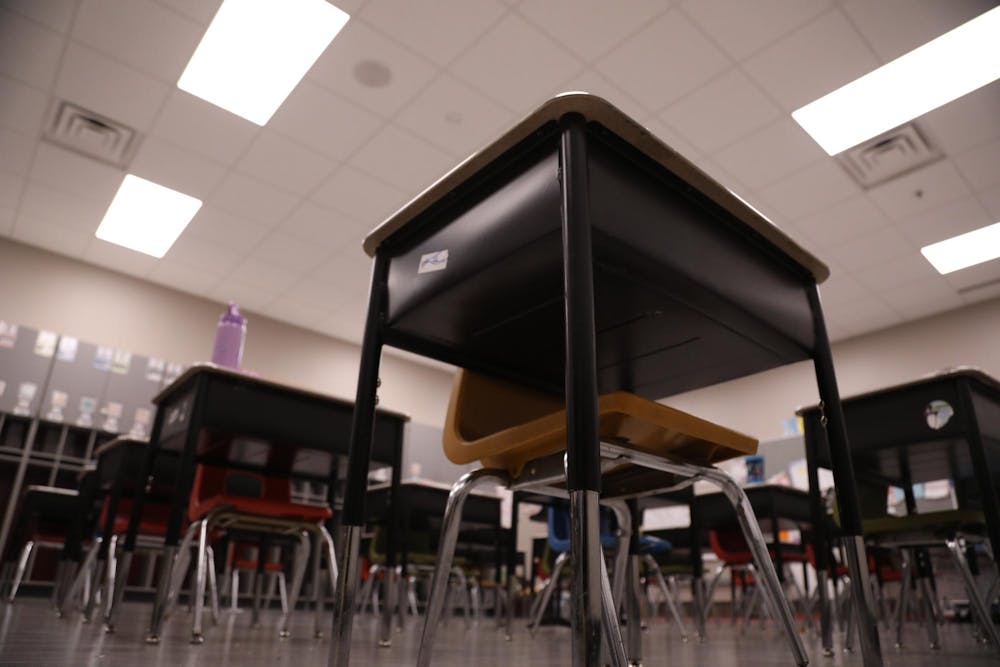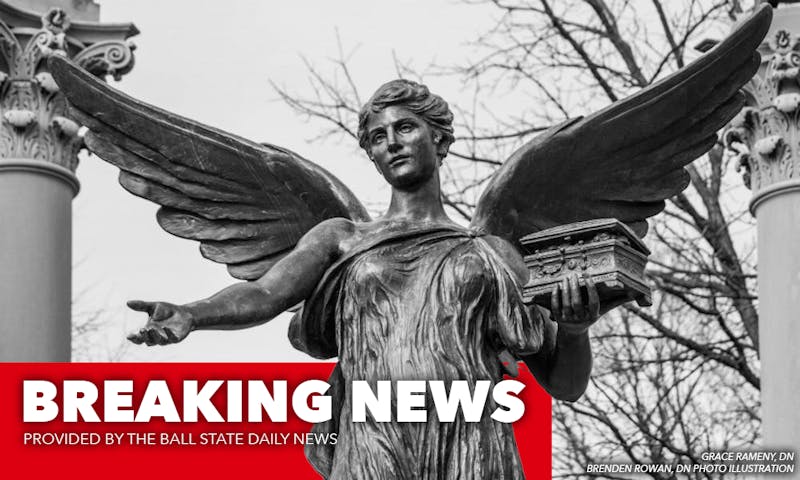Editor’s Note: In writing this story, the Ball State Daily News originally contacted the Indiana Department of Education for questions regarding the first draft of the changes; the IDOE responded with a statement. However, the Ball State Daily News did reach back out for an additional statement upon the release of the second draft and did not receive a response by the time of publication. Updates will be made online as a statement is provided.
Potential changes are on the horizon for K-12 students in Indiana, leaving parents and educators concerned about students’ abilities to achieve their post-high school plans.
Following the changes of 2023 bills, including Indiana House Bill (HB) 1002 and HB 1243, the Indiana Department of Education (IDOE) was given the task of altering the focus of Indiana high school diploma requirements.
This change shifts away from the current three options — Core 40, Core 40 with Academic Honors and Core 40 with Technical Honors — to a diploma track with one core diploma and three different optional “seals.”
In Indiana HB 1002, a new emphasis on workforce development was created, which included “a structured, work-based learning program with an aligned, competency-based education and training plan agreed to by the student, school and employer.”
Students earning their “modern youth apprenticeship” work on the job for at least 650 hours over a time period not exceeding two academic years. Students are expected to be paid and would receive post-secondary credit for working.
Through Indiana HB 1243, a handful of changes to education in the state were passed, but the most notable curriculum changes were “Indiana diploma requirements and designations and satisfying certain course requirements by obtaining a diploma,” as described on the bill’s information page.
Hoosiers were informed that these incoming diploma changes would start affecting the class of 2029 in late March 2024. Feedback was collected throughout the summer, and a second draft of changes was released in August 2024.

The new changes require a base of 42 credits where students are required to complete a series of required courses, including but not limited to seven semesters of English, seven credits of math, seven credits of “science, technology and engineering,” and five social studies credits.
Students have the option to pursue “seals” or forms of additional education. The seals are “enrollment,” “enlistment and service” and “employment,” with each seal having an “honors” or “honors plus” option.
The enrollment seal would set students up for college enrollment and includes requirements for advanced placement classes, advanced math courses and dual credits. The enlistment and service seal aims to prepare students pursuing military service by requiring Junior Reserve Officers' Training Corps (JROTC) service, a score of 31 on the Armed Services Vocational Aptitude Battery (ASVAB) exam and completing hours of public service.
The employment seal prepares students for entering the workforce after graduating and is what Hoosiers were worried about after a proposal by the IDOE. To earn this seal, students would have to acquire a “pre-apprenticeship,” a “modern youth apprenticeship” and a “market-driven credential of value.”
Derrick Schaible, a Decatur, IN resident, initially had significant concerns regarding the proposed changes to Indiana’s high school diploma requirements. Schaible, whose son is set to graduate from Adams Central High School in 2029, worried that the adjustments could jeopardize his son's goal of attending Purdue University and pursuing a career as a veterinarian.
“If nobody requires [these advanced classes], why would they offer [them]?” Schaible questioned. “Where will [my son] get these requirements to get into Purdue?”
Schaible was concerned the proposed changes would cause stress and uncertainty for his son, especially as they appeared to shift focus toward “workforce readiness” rather than college preparation. The lack of coordination between high schools and colleges increased his worries, especially since his son might need to attend a neighboring school district to meet specific college admission requirements.
However, Schaible’s stance shifted slightly after further review of the new diploma options.
“I was reading about the new diploma options — the service option, honors option and honors plus service — I was like, ‘Man, there's so many options,’” Schaible said.
Though more at ease, Schaible remains cautious, especially concerning how the diploma changes will impact students in rural communities like his son’s.
“I'm still worried that he's not going to be prepared, that he won't have those necessary courses,” Schaible said.
Schaible’s lingering concern centers on the implementation of work-based learning opportunities in rural areas and whether schools will have the resources to meet the new requirements. He also questions the communication between the IDOE and various sectors, including the military, regarding the new diploma standards.
While Schaible acknowledges that the changes could open up more opportunities for students, he remains skeptical about whether these revisions will fully address the needs of all students, particularly those aiming for college or specialized careers.
“I think they're close on the [fundamental] base for work programs,” he said. “But I think it needs to be clearer for students who want to go to a four-year university or enter a specific trade.”
Linda Laws, a New Castle High School history teacher, has shifted her stance on the proposed diploma changes, now expressing satisfaction with the revised plan. Initially concerned about the absence of a mandatory world history course, she is pleased that the new requirements include two credits for “world perspectives,” including advanced world language classes and world-focused social studies courses.
“I'm very happy to see that this is back,” Laws said. “At least they would get one year of world history or other world perspective classes, which I think is really beneficial for them.”
Laws also appreciates the increased flexibility in course options, as she was previously concerned about students having to go to a separate school district just to take the electives they need to gain admission to their desired colleges and universities.
“Now, they're not entirely limited when it comes to world history,” she said. “It will be available for them, which is awesome.”
She believes this flexibility will better align with college expectations, as a lot of colleges and universities won’t admit students who have never taken a world history class before.
“It's just unreasonable,” she said. “I'm glad that these revisions bring back some of the standard classes that are essential for college readiness.”
Although Laws was concerned about a potential shift toward an “assembly line” approach in high schools, she feels more reassured with the latest draft.
Laws also commented on the new “readiness seals” in the diploma plan, which covers enlistment, employment and enrollment paths. She believes these seals are comparable to the existing technical and academic honors tracks and offer valuable options for students with different goals.
“I think the seals are great for students who want to do more, whether they're aiming for college or a specific career right out of high school,” Laws said. “It's good that students can still earn a base diploma.
Melanie Wright, a past representative from District 35 and Indiana teacher, encourages all levels of educators to continue to voice their concerns. She also encourages students, parents, local businesses and the Indiana Chamber of Commerce to speak up and out.
Wright also voiced concern over the board of directors and state superintendent for the IDOE not being elected by the public but rather appointed by the governor, further removing public opinion from these decisions.
Above all else, she pointed to the importance of choice for students and the importance of educator voices.
“There are groups of people [who] legislators listen to more. Sometimes when teachers speak out, they don’t [listen], and there's a negative perception that comes with that,” Wright said. “When business people start talking, they start changing things and making them better. It’s just where the money and power is.”
Contact Meghan Braddy and Olivia Ground with comments at meghan.braddy@bsu.edu or oliviaground@bsu.edu





The Daily News welcomes thoughtful discussion on all of our stories, but please keep comments civil and on-topic. Read our full guidelines here.